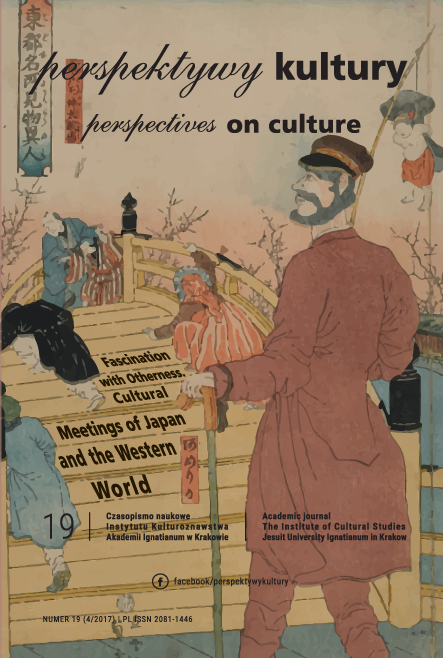Świat danych
Kilka słów o wizualizacji informacji
Abstrakt
W świecie cyfrowych technologii tworzenie informacji opiera się na przetwarzaniu danych, będących uporządkowanymi strukturami za- pisanymi w postaci sekwencji zer i jedynek. Taka reprezentacja niesie ze sobą istotne konsekwencje dotyczące sposobów gromadzenia i prze- twarzania danych, a w konsekwencji ich wizualizację i analizę. Proce- sy te opierają się głównie na algorytmicznych metodach, dostępnych z poziomu aplikacji, często ogólnie dostępnych i nieodpłatnych. Na- rzędzia te dostępne są również dla humanistów. Aby uprawiać cyfro- wą humanistykę powinni oni włączyć je do swojego warsztatu badaw- czego. Celem artykułu jest przedstawienie podstawowej problematyki związanej z zagadnieniem eksploracji i wizualizacji danych w naukach humanistycznych. Stanowi on przyczynek do dalszych rozważań.
Bibliografia
AZZAM Tarek, EVERGREEN Stephanie, GERMUTH Amy A., KISTLER Susan. 2013. J.,Data Visualization and Evaluation, “Data Visualization, Part 1”, No 139.
BATTERSHILL Claire, SOUTHWORTH Helen, STAVELEY Alice, WIDNER Michael, WILLSON GORDON Nicola, WILSON Elizabeth. 2017. Scholarly Adventures in Digital Humanities. Making The Modernist Archives Publishing Project, Cham: Pallgrave MacMillan.
BIECEK Przemysław. 2014. Odkrywać! Ujawniać! Objaśniać! Zbiór esejów o sztuce prezentowania danych, Warszawa: Wydawnictwo Uniwersytetu Warszawskiego.
BOMBA Radosław, RADOMSKI Andrzej, SOLSKA Ewa (eds.). 2016. Humanistyka Cyfrowa. Badanie tekstów, obrazów i dźwięku, Lublin: E-naukowiec.
HAI-JEW Shalin. 2017. Data Analytics in Digital Humanities, Cham: Springer.
HENDERSON Stuard, SEGAL Eden H. 2013. Visualizing Qualitative Data in Evaluation Research, “Data Visualization, Part 1”, No 139.
COOK Dianne, EUN-KYUNG Lee, MAJUMDER Mahbubul. 2016. Data Visualization and Statistical Graphics in Big Data Analysis, “Annual Review of Statistics and Its Application” No 3, http://www.annualreviews.org/ keyword/Information+Visualization
DRUCKER Johanna. 2014. Introduction To Digital Humanities. Cour- se Book. Concepts, Methods, and Tutorials for Students and Instructors, https://ia801202.us.archive.org/4/items/IntroductionToDigitalHumani- ties/Introduction%20to%20Digital%20Humanities.%20Concepts,%20 Methods,%20and%20Tutorial%20for%20Students%20and%20Instruc- tors.pdf
ELKINS James. 2017. An Introduction to the Visual Studies That is Not in This Book, [in:] Theorizing Visual Studies Writing Through the Discipline, J. El- kins, K. McGuire, M. Burns, A. Chester, J. Kuennen (ed.), New York: Routledge.
KAMPKA Agnieszka. 2011. Retoryka wizualna. Perspektywy i pytania, „Forum Artis Rhetoricae”, No 1.
KOLTAY Tibor. 2017. Information Overload in a Data-Intensive World, [in:]A.J. Schuster (ed.), Understanding Information. From the Big Bang to Big Data, Springer: Cham 2017.
KRZYSZTOFEK Kazimierz. 2012. Big Data Society. Technologie samozapisu i samopokazu: ku humanistyce cyfrowej, „Kultura i Historia”, No 21, http:// www.kulturaihistoria.umcs.lublin.pl/archives/3626
MILLER James D.2017. Big Data Visualization, Birmingham: Packt Publish- ing Ltd.
OSIŃSKA Veslava, MALAK Piotr, BEDNAREK-MICHALSKA Bożena. 2016. Rozwój badań nad wizualizacją informacji, “Annales Universitatis Paedagogicae Cracoviensis. Studia ad Bibliothecarum Scientiam Perti- nentia”, No 14.
POSTMAN Neil. 1992. Technopoly. The Surrender of Culture to Technology, New York: Vintage Books.
RADOMSKI Andrzej, Wizualne analizy, wizualne narracje, https://www.aca- demia.edu/25915335/Wizualne_analizy_Interaktywne_narracje
SINCLAIR Stéfan, ROCKWELL Geoffrey. 2016. Text Analysis and Visualiza- tion, [in:] A New Companion to Digital Humanities, S. Schreibman, R. Sie- mens, J. Unsworth (eds.), Malden: Wiley Blackwel.
YAU Nathan. 2013. Data Points. Visualization That Means Something, Indianapolis: John Wiley&Sons.
VAN SCHIE Gerwin, WESTRA Irene, TOBIAS SCHÄFER Mirko. 2017.
Get Your Hands Dirty. Emerging Data Practices as Challenge for Research In- tegrity in: The Datafied Society Studying Culture through Data, M. Tobias Schäfer K. van Es (eds.), Amsterdam: Amsterdam University Press.
Copyright (c) 2017 Akademia Ignatianum w Krakowie

Utwór dostępny jest na licencji Creative Commons Uznanie autorstwa – Bez utworów zależnych 4.0 Międzynarodowe.
Autor, zgłaszając swój artykuł, wyraża zgodę na korzystanie przez Wydawnictwo Uniwersystet Ignatianum z utworu na następujących polach eksploatacji:
- utrwalania utworu w formie papierowej, a także na nośniku cyfrowym lub magnetycznym;
- zwielokrotnienia utworu dowolną techniką, bez ograniczenia ilości wydań i liczby egzemplarzy;
- rozpowszechniania utworu i jego zwielokrotnionych egzemplarzy na jakimkolwiek nośniku, w tym wprowadzenia do obrotu, sprzedaży, użyczenia, najmu;
- wprowadzenia utworu do pamięci komputera;
- rozpowszechniania utworu w sieciach informatycznych, w tym w sieci Internet;
- publicznego wykonania, wystawienia, wyświetlenia, odtworzenia oraz nadawania i reemitowania, a także publicznego udostępniania utworu w taki sposób, aby każdy mógł mieć do niego dostęp w miejscu i czasie przez siebie wybranym.
Wydawca zobowiązuje się szanować osobiste prawa autorskie do utworu.





